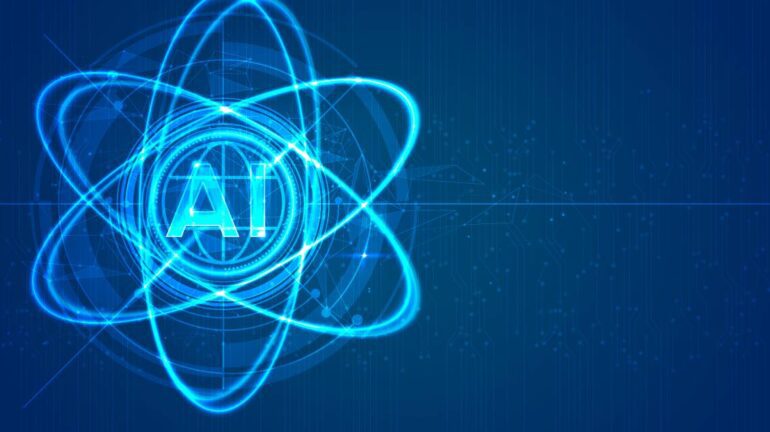TL;DR:
- Experimental physicists face challenges in extracting relevant information from vast amounts of data.
- Sparse Convolutional Neural Networks (SCNNs) enable researchers to focus on relevant data while filtering out extraneous information.
- SCNNs have accelerated real-time data analysis and are being implemented in experiments worldwide.
- This shift marks a historic change for the physics community, with computer science leading the way in computational advancements.
- SCNNs were born out of the need to handle sparse data, such as Chinese handwriting recognition.
- Convolutional Neural Networks (CNNs) were designed for information-dense images, while SCNNs excel at analyzing sparse data.
- SCNNs empower physicists to optimize time and computational resources by targeting the meaningful aspects of their data.
Main AI News:
Imagine grappling with a thousand-page tome, each page boasting a solitary line of text. Your task? Extracting the profound wisdom enshrined within its pages using a scanner that meticulously peruses one minuscule square inch at a time. A laborious and time-consuming endeavor, indeed. This plight resonates with experimental physicists, whose lives mirror this struggle. In particle experiments, detectors capture and dissect copious amounts of data, a mere fraction of which holds any relevance. Kazuhiro Terao, a physicist at the esteemed SLAC National Accelerator Laboratory, elucidates, “In a photograph featuring a bird soaring amidst the celestial expanse, every pixel becomes imbued with meaning.” However, when it comes to the images that physicists scrutinize, only a small fragment truly matters. Consequently, painstakingly analyzing every intricacy squanders valuable time and computational resources.
But behold! The tides are turning. Enter the sparse convolutional neural network (SCNN), an innovative machine learning tool empowering researchers to discern the crux of their data while filtering out the extraneous. By harnessing SCNNs, scientists achieve an unprecedented leap in real-time data analysis capabilities. Their fervor for this breakthrough transcends geographical boundaries, with plans to employ SCNNs in ongoing and forthcoming experiments across three continents. This transformation marks a historic paradigm shift within the physics community.
“In the realm of physics, we have become accustomed to crafting our algorithms and computational methodologies,” explains Carlos Argüelles-Delgado, a distinguished physicist from Harvard University. “Traditionally, we have spearheaded advancements, but in the realm of computation, computer science now takes the reins, leading the way.“
The Sparse Frontier
The genesis of SCNNs traces back to 2012 when Benjamin Graham, then affiliated with the University of Warwick, embarked on a quest to develop a neural network capable of recognizing Chinese handwriting. At that time, the prevailing tools for image-related tasks were convolutional neural networks (CNNs). To tackle the challenge of Chinese handwriting, a writer would trace a character on a digital tablet, generating an image composed of roughly 10,000 pixels. The CNN would then traverse the entire image, maneuvering a 3-by-3 grid called a kernel while centring it on each pixel individually. At each kernel placement, the network would engage in a convoluted mathematical calculation, known as a convolution, meticulously seeking out distinctive features.
CNNs emerged as a potent tool for handling information-rich images like photographs. However, when confronted with an image of a Chinese character, the landscape is predominantly barren, evoking the term “sparse data” among researchers. This sparsity represents a common attribute found in the natural world. Graham exemplifies this phenomenon, stating that if the Eiffel Tower were enveloped within the smallest possible rectangle, a staggering “99.98 percent of that rectangle would consist of air, with a mere 0.02 percent occupied by iron.”
The advent of SCNNs has sparked a revolution, empowering physicists to unravel the mysteries of the universe more efficiently than ever before. With these novel neural networks at the helm, the boundaries of scientific inquiry are primed for expansion, as they revolutionize the way we process and analyze voluminous datasets. Brace yourselves for a future where big physics meets the prowess of computational innovation, unveiling a tapestry of possibilities that were once unimaginable.
Conclusion:
The emergence of Sparse Convolutional Neural Networks (SCNNs) presents a groundbreaking opportunity for the market. By enabling efficient data analysis and reducing computational waste, SCNNs revolutionize the capabilities of experimental physicists. This paradigm shift signifies a growing reliance on computational advancements, highlighting the need for businesses to embrace and capitalize on the power of machine learning tools. The market can expect a surge in demand for SCNN-related technologies and expertise as the physics community embarks on a new era of accelerated data analysis and discovery.

